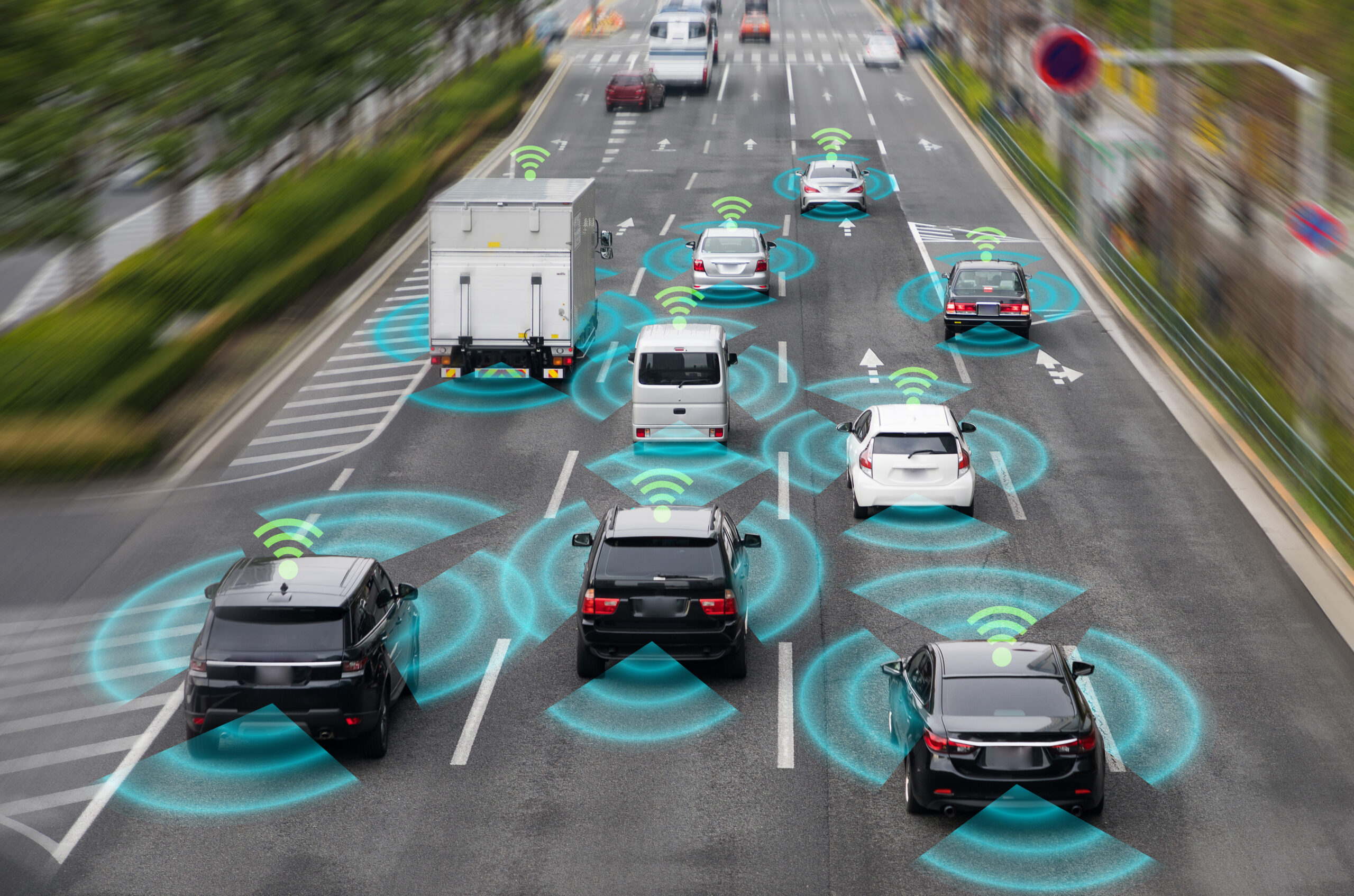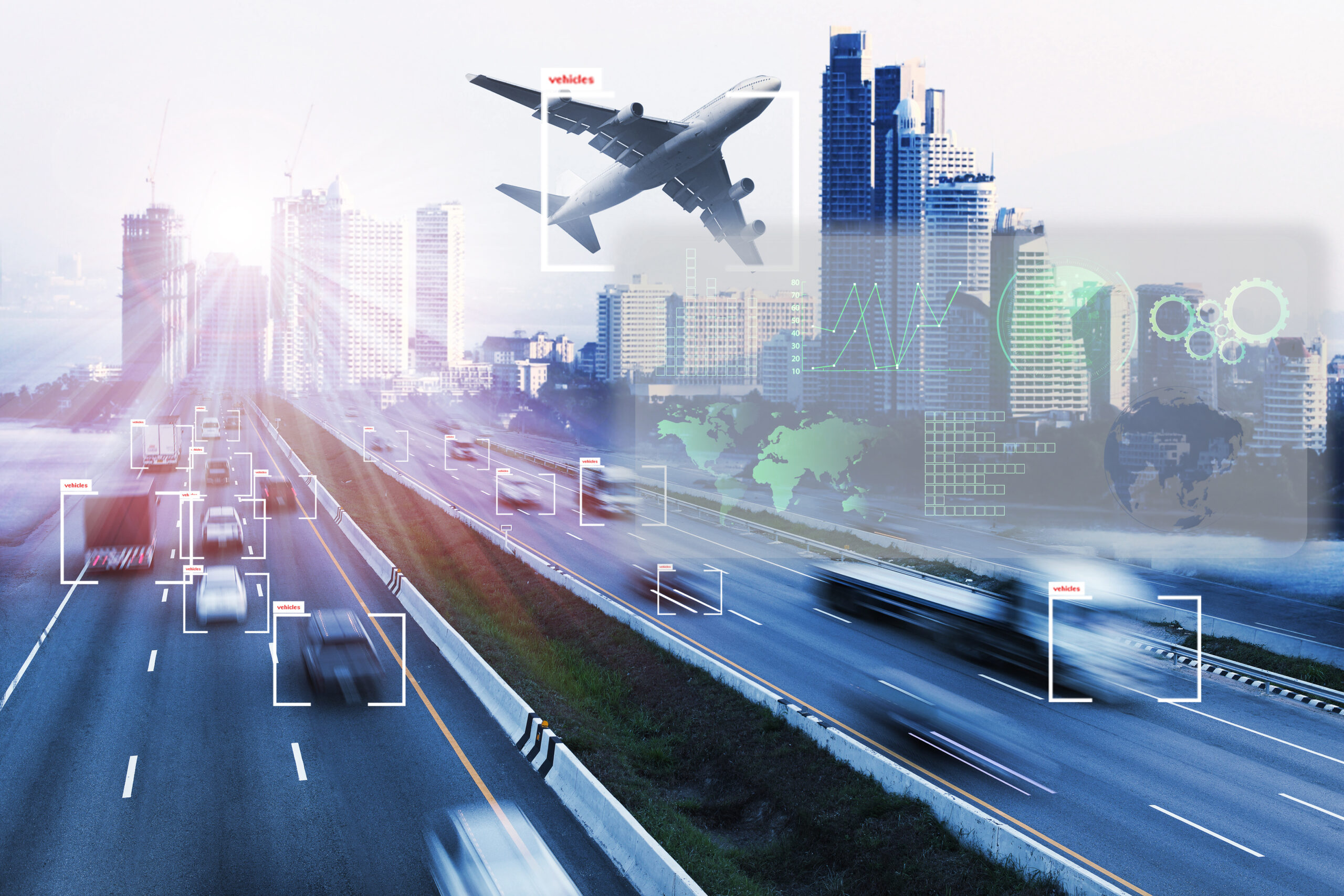Seamless Coordination
There have been many advancements in the transportation industry over the past 20 years, and with more improvements on the way. One advancement on the horizon is autonomous vehicles and dispatching, which is one of TIAT’s company specialties. Currently, there are over 1,800 autonomous vehicles in use on US roadways alone, with a growing acceptance rate. Autonomous fleet vehicles without a doubt will be a part of our future. We are actively developing and have deployed our autonomous fleet management system for a future with autonomous fleet vehicles being the norm.

Autonomous Vehicle Basics
Autonomous vehicles use sensors to create a map of its surroundings. The sensors detect obstructions, other vehicles, lane markings, pedestrians, as well as traffic signs and lights. Software transforms this information into a path for the vehicle by sending directions to the actuators that control the vehicle, directions like acceleration, braking, or steering. By using algorithms, the vehicle can avoid obstacles, while driving safely and obeying traffic laws.
Fun fact, Michigan State Legislature recently passed a bill allowing self-driving cars to operate without a driver or a steering wheel.
Autonomous Dispatching Basics
Autonomous dispatching is an automated system coordinating the seamless movement of goods, people, and services. The goal is to improve fleet efficiency, customer service, reduce miles driven, improve fleet utilization, reduce overhead, and minimize time spent on logistics planning — all while reducing late deliveries and saving the planet. With autonomous dispatching transportation requests are automatically fulfilled, routed, and dispatched using parameters set in users profiles’ matching overall capabilities of all our users on our Platform. Using large sets of data combined with machine learning, autonomous dispatching makes real time decisions optimizing routes, rerouting around traffic delays, and resequencing stops. Ensuring that deliveries are made on time.


integration of automation in transportation
Full vehicle automation is one of the next steps in the evolution of the Transportation Industry. The idea of autonomous vehicles have evolved from a dream to a reality. Between 2030-2040 we can expect fully automated vehicles to command the roadways, as well as the integration of fully automated transportation platforms for the delivery of goods. Electric Autonomous Vehicles have the potential to reduce environmental impacts and congestion from the transportation of freight. Studies also indicate for the overall lifespan of an EAV, they can cut down transportation costs upwards of 60%. The evolution and adaptation of autonomous vehicles will in many ways impact and change how we transport everything.
Predictions state that by 2050 owning an autonomous vehicle will be the norm for consumers. In 2017 Google made the first leap introducing autonomous driving technology to the consumer market. In 2020 many major automotive manufacturers followed by introducing key pieces of technology necessary for the manufacturing of autonomous vehicles. This has decreased the overall costs as the technology is being perfected.
The University of Texas reports, “if 90 percent of the cars on roads in the United States were replaced by autonomous vehicles, the savings across various industries, such as automakers, insurers, and the government, could reach as high as $450 billion.” This has been a huge incentive for policymakers to pave the way for autonomous technologies. Adapting to fully autonomous roadways will likely take a while, but the anticipated benefits to safety, the economy, and overall convenience will no doubt help the process.
The demand and adoption of autonomous semi-trucks in the U.S., has progressed much faster than passenger vehicles. There are many benefits of autonomous trucks like safety, reduced labor demand, fuel efficiency, and operating expenses.
Perks of automation in the transportation industry

Safety

Quit Being Short Staffed

reduce operating expenses

Theft Prevention

Emergency Response Applications

Industry Applications for autonomous fleet dispatching
Autonomous applications in the transportation industry go far beyond freight only. Autonomous transportation and electric vehicles reinvent the wheel. Changing how we get around, how goods and services are delivered, and how we even conduct business. It even creates a safer environment in our communities and on roadways, while saving our planet from CO2 emissions. Automation is able to do this by applying one simple fundamental which is, “work smarter, not harder”.
With the changing demands of the transportation industry ranging from commuter vehicles, shipments, deliveries, and emergency response the demand for a unified integratable system has to be the priority. This is how we are applying this new technology.

Freight Logistics
TIAT operates on data points that determine capability and capacity. Our platform searches our internal database to establish what will work for your needs. All we need are the data points and the analytics do the rest.

Emergency Response
Autonomous Dispatching, routing, and navigation can save lives! The vehicles A.V.C.S. communicates to other vehicles on the A.V.C.S. Network to move over, allowing safer and faster response times.

commuter logistics
Autonomous Dispatching, routing, and navigation is nothing new when it comes to Taxi and delivery services. What is new is the ability to have the same thing but without human interaction for efficiency, added privacy, and health safety.
